Cats are good for you.
They are family members, playmates, they will comfort and accompany you through life. While living with you, they will give you not only their trust but also much more which you will never be able to pay them back. Cats are perfect life coaches! They show you how to accept and enjoy life here and now and help you to focus on the essence of things. In addition, they enhance your physical and emotional well being.
However, not all cats are the same.
Visually, they vary in size, eye and coat colouring, build and hair length – many differentiating factors without even starting on the interior qualities, which can obviously vary a lot as well.
Out in the wild, cats reach an age of up to eight years, while indoor cats grow a lot older: up to 20 years. Please keep in mind that living with a pet comes with many responsibilities. They have their needs and they depend entirely on you. Taking on responsibility for an animal means that you need to make sure to provide species-appropriate living conditions for it.
How much space do I have?
Before deciding which cat is a good match for you, you should reflect on what a cat needs to lead a species-appropriate life and if you are able to provide it.
To what extent will keeping a cat change your life?
Is this what you want?
Does it really match your lifestyle?
Do you have enough time to spare for your pet and will you be able to look after it financially considering living costs, vet visits etc.?
What happens if you fall ill or need to travel?
And what about daily life – e.g. work hours? Will you be away from home all day, maybe because you are commuting? Is there a second cat to keep the newcomer company, so it doesn’t get lonely?
As you see, there are many questions to be considered and it is important for you to be honest with your answers. Apart from you, everybody else living with you should also be in accord with your decision. Will they accept a new inhabitant, who will stay for years to come?
In- or outdoor cat?
House pet or free roaming pet? – This obviously depends on your living situation as well.
Roaming free on a large territory has its charm for a cat, however this kind of freedom comes with a lot of risks. House cats in general enjoy a longer life span, simply because living indoors is much safer.
Creating a species-appropriate environment indoors – look here.
– can make a cat‘s life indoors highly exciting and enjoyable!
You should also consider how you will cope with your cat not returning home and if you are prepared to live with that kind of risk. What if something happens to it? Confront yourself with that possibility. Also – is this according to the animal’s wishes? Often, a compromise can be struck: e.g. keeping a house cat with some outside access.
Single keeping – a good idea?
Cats are naturally social animals.
They need the company of conspecifics and should not be kept alone – even if you play and cuddle with them a lot you will not be able to replace a real “cat partner” – no matter how cat-like you may act!
But, as always, there are exceptions.
If a cat is used to living by itself, it will not easily accept a newcomer to the household.
Apart from that, the chemistry needs to be right: If the two can‘t stand each other because they are too different in character, this can result in a stressful or even dangerous situation.
Do I want to keep other pets?
If you are planning on – or already live with – other pets, you should consider first if the newcomer will harmonise with the patchwork family. Will it work or is trouble ahead?
As of the 4th week of their lives, kittens are being socialised. In general, this happens in the company of siblings – single kittens are an exception.
The kitten learns everything about cohabitation during this period and is educated by both the cat mum and its siblings.
If a cat grows up in this kind of species-appropriate environment, it may always stay a lone hunter but it will never be a loner at home – cats love company by nature! They like physical contact with other cats: They clean each other, as well as enjoy playing and relaxing together – everything is more fun together than alone!
So, who would be a desirable candidate for a “cat flat-share”?
Look here – we have collected information on how you can help your cat to accept other pets and which kind of combination makes the most sense:
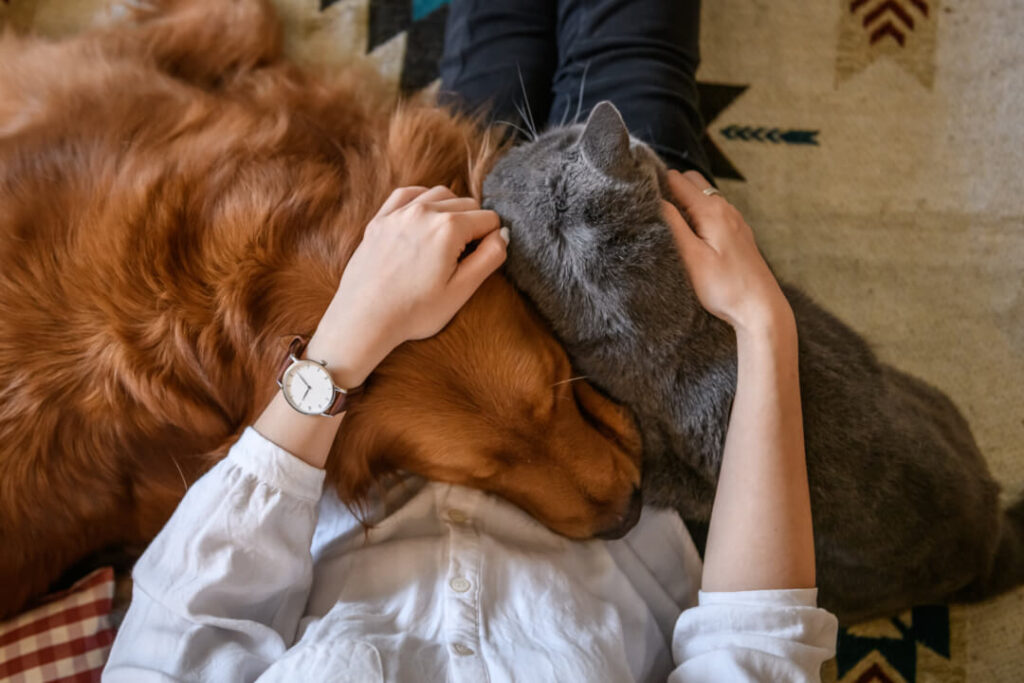
What standards do I have?
Once you have decided on letting such a charming, elegant being into your life, you should reflect on what kind of cat would be the ideal match for you.
What type would be the right one for you – are there e.g. any preferences concerning the outer appearance? Would you like to provide a new home for a cat from the shelter or do you prefer one with a “pedigree”?
Cat breeds at a glance
Quelle: Fressnapf (2017): Top 10 Katzenrassen. [YouTube-Video.], veröffentlicht am 27.10.2017, https://www.youtube.com/watch?v=xXIK6N0J17E, zugegriffen am 01.03.2019
In addition, our Cat’s Best breed profile is regularly presenting one breed at a time:
- What is the special trait of this breed?
- What are the unique traits of the British Shorthair?
- Interesting facts on keeping and care
Long or short haired cat?
Do you prefer a short-haired to a long-haired breed – or vice versa? Both types have their charms!
All cats need coat care – now and then or frequently – depending on the breed.
Long hair obviously needs more care, meaning that more time needs to be invested. Long-haired breeds often also have a dense undercoat which means that they need extra combing several times a week – otherwise you may end up with tangled or matted spots which in the end need to be cut out.
The hair changing period in fall and winter will also be a little less intense with short-haired breeds, as their undercoat is thinner. House cats in general are less affected by the coat change as they are exposed to only moderate temperature changes throughout the year. That way, their coat is not forced to adapt to the changing seasons as much.
Younger or older cat?
Who can resist such a cute cat baby? However, a tiny kitten needs a lot more attention than a grown cat.
It may have already learned the basics from the cat mum when arriving at your home – but the new surroundings mean that it has to find its way around and learn a lot of things from scratch. This is not only a big adventure for the kitten, it also means that some damage may come with the process and breakable items may fall victim to the “attacks”.
An older cat will be a little more serene from the start. It may know from experience how to live in a human environment, it knows what to expect and how to adapt.
However, even older cats need to adjust to the new conditions. It takes time to become acquainted with the new environment and it will make things easier if you enquire with the previous owner or the shelter what the cat is used to and what its preferences are. Also make sure to ask for specifics about its character so that both of you know what to expect.
Male or female?
Lady or tomcat? Physically, male cats are a little larger in size. Concerning social behaviour, fights between males may be more serious, however they don’t take place as often.
Between cats, the females have the “alpha” status, which needs to be confirmed more often than not: the proverbial “cat fight” therefore is far more frequent than the occasional “brawl” between two males.
However, castration makes a big difference for both sexes:
Non-castrated males can turn wild sometimes. They will be roaming outside for longer periods at a time, have a lot of energy and will also be marking more – especially their favourite spots in the living room. Tomcat urine has quite a penetrating odour! Non-castrated females will also roam outside for much longer, and might return pregnant.

External factors
Ties that stand the test of time:
What do the frame conditions at home look like?
What cat will match your living environment best?
Do you have enough space?
How much time do you have?
A wild and temperamental animal will be unhappy in a small room – this will be no fun, neither for the cat nor for you! None of you will be happy in the long run.
Therefore, take the time upfront and check if your living conditions match those of the cat.
TIP: Make an upfront checklist with the following factors:
1. experience
2. time
3. space
4. family situation
5. keeping and care
Previous experience with cats?
“Beginner’s cat” or strong-minded rascal?
Have you lived with a feline friend before? Maybe you have looked after cats before? You are a professional cat keeper with ample experience – maybe looking for new challenges with a cat much different to its predecessor?
If you are a newcomer to, you should choose an affectionate animal with a gentle nature. However, as a seasoned cat owner, you may want to try a new co-inhabitant with a strong personality, in case you feel up to the challenge.
How much time can I spare?
Do you have enough time for a cat? How much time can you spend with your animal? Are the specific breeds which match your working life?
Independent of breed and origin – if you are working and have to leave your animal alone at home, you should make sure to provide a second cat for company. There is nothing more depressing than a house cat staring longingly out the window all day!
Out there life is taking place just a few metres away – but the cat is separated from it by a screen. Lonely.
A cat is not a piece of furniture – meant to attract and amuse – it is a living being with specific needs, just like you.
There are a few cat breeds that are allegedly getting along particularly well with conspecifics – but one thing is for sure: Notwithstanding the above, every living being needs company and discourse.
– Are you able to provide this for your future cat?
For how long will the cat be left alone?
Almost everybody with a job is forced to leave their animal alone at home for a few hours per day. There are some cats who are used to be alone for up to eight hours a day.
However, your feline friend should not be left alone for longer than 24 hours ever. Only outdoor cats can be left to themselves for up to two days at a time – provided that water, food are at hand and the occasional check-in can be pre-arranged, in case of an emergency.
As opposed to dogs, cats used to a life outdoors can survive on their own for a while if needed. Obviously, the territory must provide enough opportunities for mice hunting and a dry resting spot.
Enough time for intensive grooming?
How much time do you want to invest in coat care? Upfront, please list the pros and cons of keeping long- or short-haired breeds respectively to make a well-informed decision.
The longer the glory, the more intense and time-consuming is the care. Here, we have assembled a few examples of breeds with either short or long hair for you:
Short haired cats – e.g.
- Abyssinian
- Bengal
- Siamese
Not to forget – the house cat also belongs to the short haired breeds. (By the way, a well beloved, independent breed!)
Long haired breeds – e.g.
- Angora
- British Longhair
- Persian
These are only three examples of the short or long haired kind respectively. Obviously, there are much more out there!
Cat allergy?
Some humans react sensitively to cat hair.
If you think you might be sensitive or allergic to cat hair, pay a visit to the allergist to test both you and your cat. Both your blood and the cat’s saliva will be tested, as the culprit mostly is not the hair itself – it is the actual saliva that human beings are reacting to: The saliva contains proteins which can trigger allergies.
REMEMBER: Outdoor cats bring a lot of pollen into the house during spring time – an additional source of stress, if you are allergic to them.
Will the cat grow up with a family?
How has your new feline friend been socialised?
Does the new pet match both you and your environment? If kids are around, avoid adopting a “Rambo” cat and instead opt for one with a gentle, well-meaning character.
You can draw your conclusions from the way the cat has been brought up: A wild stray may be both shy and timid, while a cat that has been growing up with children and other pets might be more trusting and affectionate.
Shelter candidates: Animals that have been through a lot or have suffered a hard blow in their lives can end up to be the most affectionate beings.
However, patience and sensitivity are asked for in those cases. Do not forget that the animals only react in the way they do because of previous bad experiences they have suffered.
What will happen during the holidays?
The best time of the year is holiday season!
Do you have a plan for the cat at hand, however?
Cats who enjoy travelling are rare. Most cats prefer to stay at home. Do you have reliable neighbours or friends who don’t mind stepping in during the time you are away?
Make sure that this is the case, before planing or booking your trip.
Ideal would be someone who is already known to the animal, and able to nourish it with both food and affection. Cuddling and play should be part of the cat sitting as well as food and communication
Another option would be a pet hotel with professionals looking after your friend.
Make sure upfront if your cat will be willing to go – cats are individuals with unique needs and preferences that need to be considered: Nobody wants to be parked in a random place overnight!
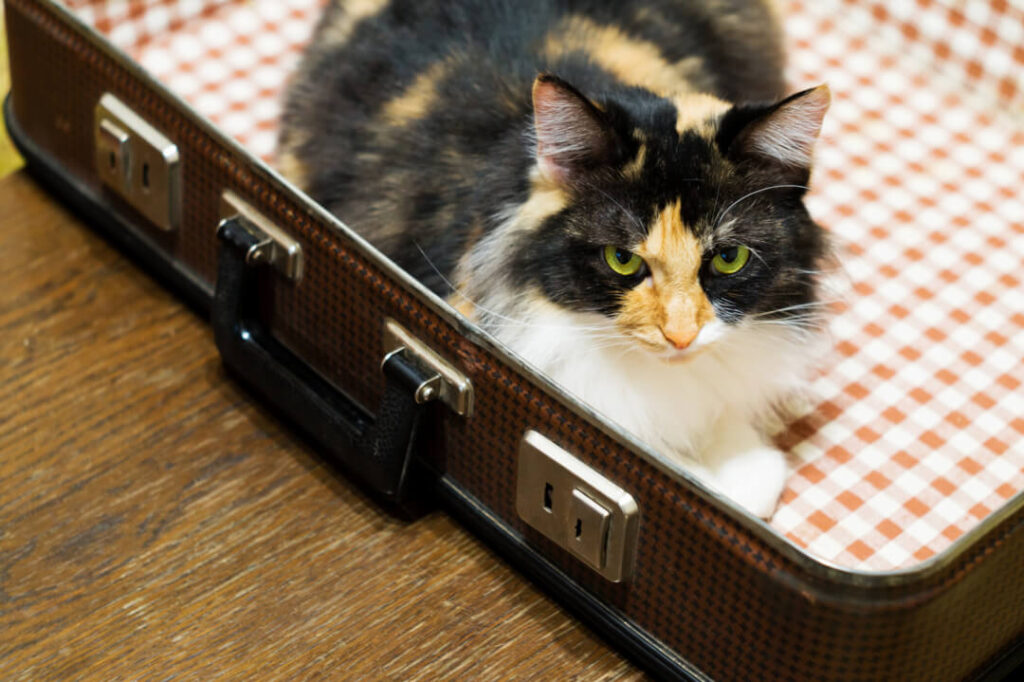
The cat’s character
What type of personality do you prefer?
A daredevil with a strong will, or a child loving cat of the “butter wouldn’t melt in their mouth” kind? There are affectionate cats, cat breeds who love water or are not afraid of anything in general – obviously, we are spoilt for choice here.
As profoundly unique individuals, cats vary in personality as much as in outer appearance.
Some breeds have similar traits concerning their character. We have created a broad overview here for you:
Are you looking for a…
Affectionate cat?
In that case, we can recommend Burmese, Maine-Coon or Ragdoll to you.
All of the above are renowned cuddle fans who will always try to stay close to you, and appreciate affection.

Communicative cat?
Choose an Abyssinian, Bengal or Siamese!
These breeds will always keep you entertained! They will enjoy conversations with you around the clock. The talkative breeds mew, purr and coo – you will be surprised of how detailed a cat vocabulary can be!
After a while you will be able to understand their way of communicating their needs.
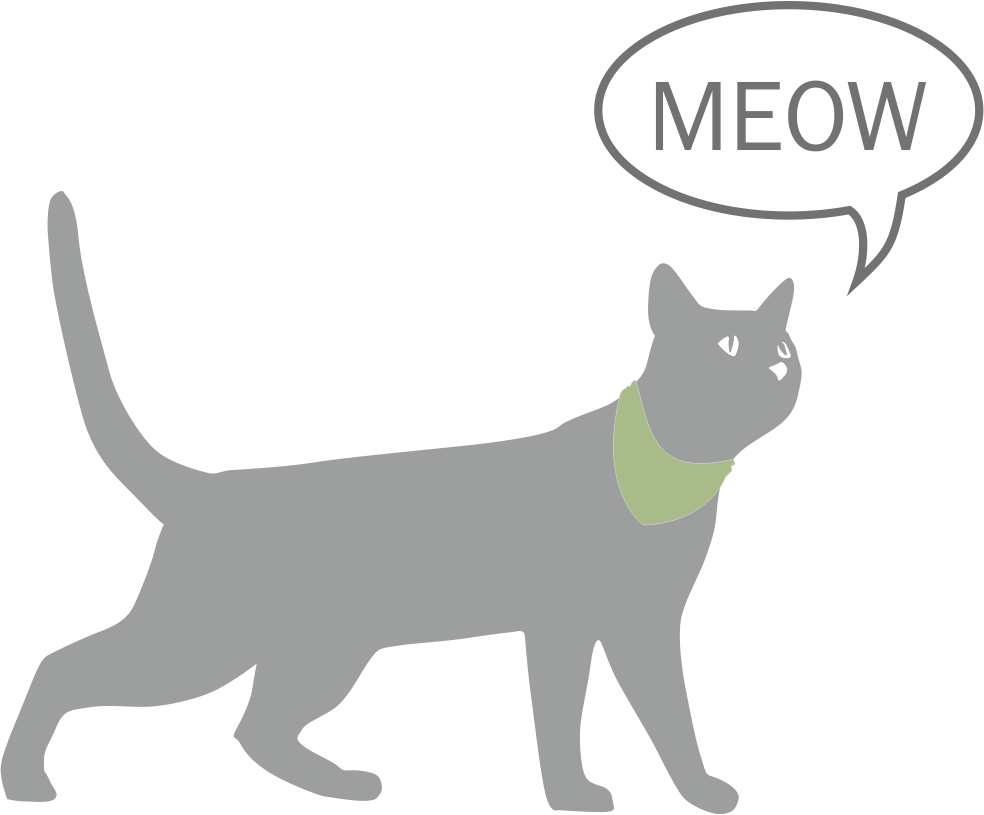
Playful cat?
If you are searching for a cheerful companion who is always up for play and fun, Bombay, Cornish Rex and Sphynx are the right choice for you.
Play and frolicking will be among those cats most loved pastimes – apart from the odd nap in between of course – after which they will enjoy the play with renewed energy!

Shedding or no shedding?
Do you prefer a breed which doesn’t loose much hair?
In that case, the European Shorthair, the German Rex or a Savannah would be the right choice for you.
There are of course the hairless or “nude” breeds – called Sphynx, a Canadian breed which spends it entire life “hairless”.Hair, hair everywhere and not a brush in sight? – With a Sphynx you will never have that kind of problem! A nude animal cannot loose hair – Sphynx cats have a thicker skin instead.

The cat’s body type?
What should your cat look like?
The eye and coat colour can vary a lot, as well as build, height, head shape, ear and eye size – through to the position and length of the tail.
Even within the same breed there may be exceptions to the rule: We are not talking about “robot”- pets here, rather about individual beings, who sometimes won’t adhere completely to breeding concepts but to mother nature instead.
Each breed has a certain build. Some are rather slim and petite, others may be compact and sturdy. This is first and foremost a matter of taste.
What type do you like best?
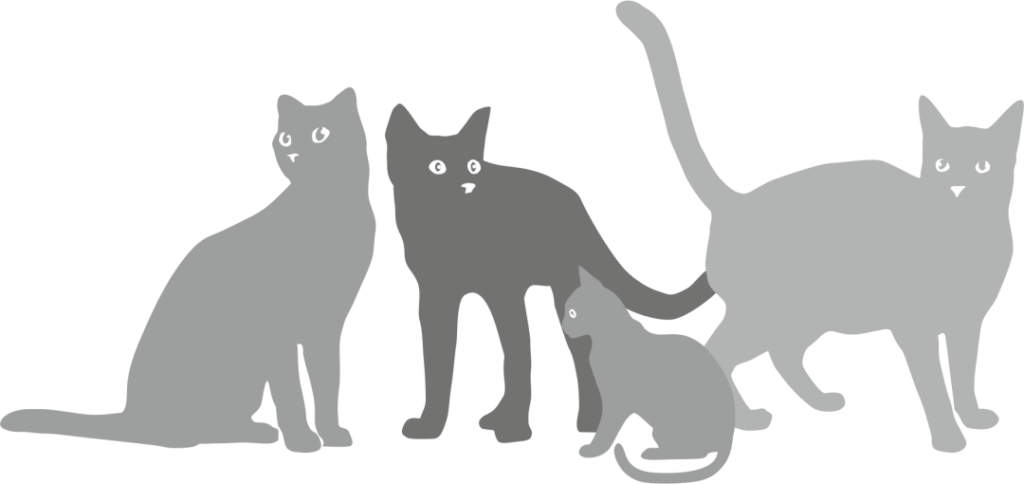
Conclusion
Each breed has certain traits attributed to it, both in character and appearance. Within a certain breed, these can be identical. The will be the same for generations and form part of the heritage.
However, the owners do not only attach importance to these external values, but also to a certain character. Professional breeders therefore mainly mate the parents who bring these qualities.
What are the character traits and needs of the various breeds then?
Here is a first impression:
The Cat’s Best Breed Guide
There are numerous cat breeds, from “Abyssinian” through to “York Chocolate”
– so which breed is a good match for me?
We introduce them! Our Cat’s Best Breed Guide regularly introduces new breeds.
There is a “profile” for each which will help you to get a brief, informative overview: What does your cat look like, what is its size and weight, its coat and character? Then we introduce the special traits – including the ones unique to this particular breed, through to interesting facts on keeping and care.
You will find the information here.
Varying personalities
The character of a cat is decisive on the way it will behave and handle specific situations. Cat breeds have their basic character traits – some attributes will even be labelled “breed-specific”. However, is the character genetically implemented in the pedigree? Will all family members show the same traits? Is the personality consistent within the breed?
Those who have been acquainted with cats for longer periods – from kittens through to seniors – will soon have realised that there will be differences in both appearance and personality from the very beginnings!
The differences will be visible right at the start of a cat’s life: Some can’t wait to conquer the world – or at least the nearest environment. Others will be more anxious and will make their first steps into life more careful and cautiously – no matter what breed or gender. This mentality will remain.
Mostly throughout the cat’s entire life.
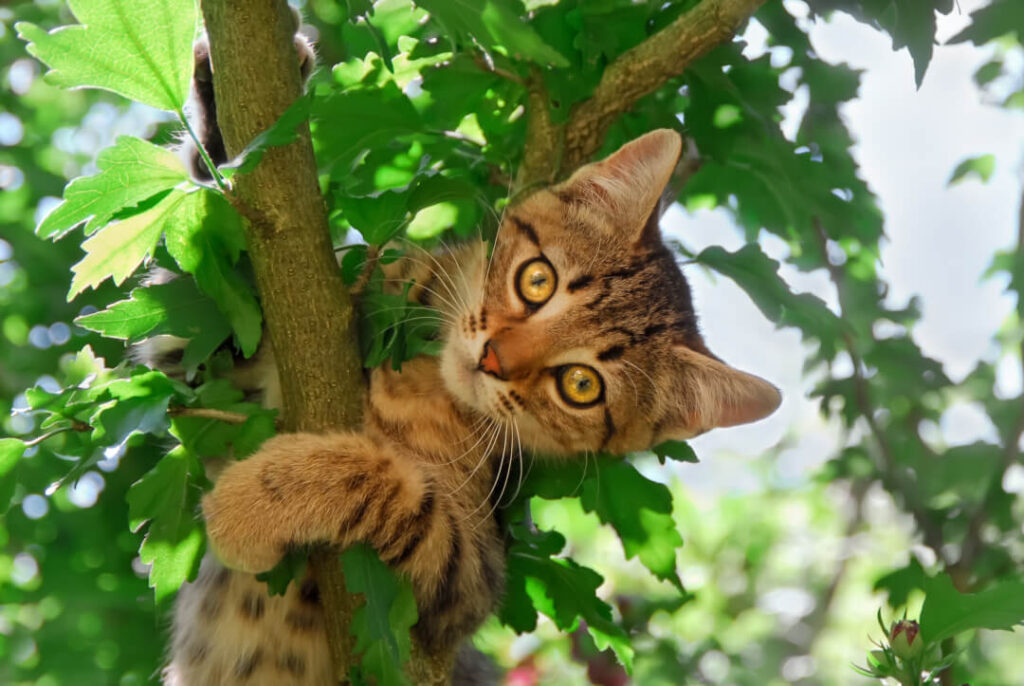
This is due to the fact that character attributes are not only genetically determined but also have a lot to do with outside influences.
The first few weeks are decisive as the cat will be socialised during this period.
During this time, she learns everything about kitty togetherness and is educated not only by the cat mum, but also by the siblings; kittens who have a lot of contact with people and animals during this time will – when they are grown up – be rather trusting like fur noses who were never allowed to get to know this.
The house cat is a four-legged surprise bag. The majority of cats living with humans are so-called house cats – also known as mongrels or – if living outdoors – “stray”. In appearance, they often resemble the European Shorthair, but they have no pedigree and there is no pressure to fulfill any breed standards.
As opposed to the European Shorthair, house cats come in a colourful mix – each of them unique! Since several cat “fathers” can be involved, one litter can be full of surprises, with new, charming combinations in the mix.
Do the test!
Having a hard time to decide?
Now you at least have an inkling what a cat needs to lead a happy life – however, what is it that you need to be happy?
If you want to know exactly, you have to take the practical test and get involved in living with a cat.
But one thing is certain: no matter which breed you choose – all cats are wonderful creatures that enrich your life.


